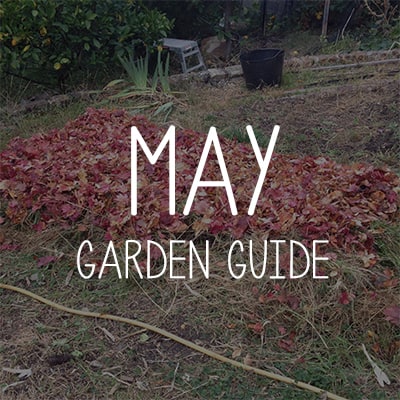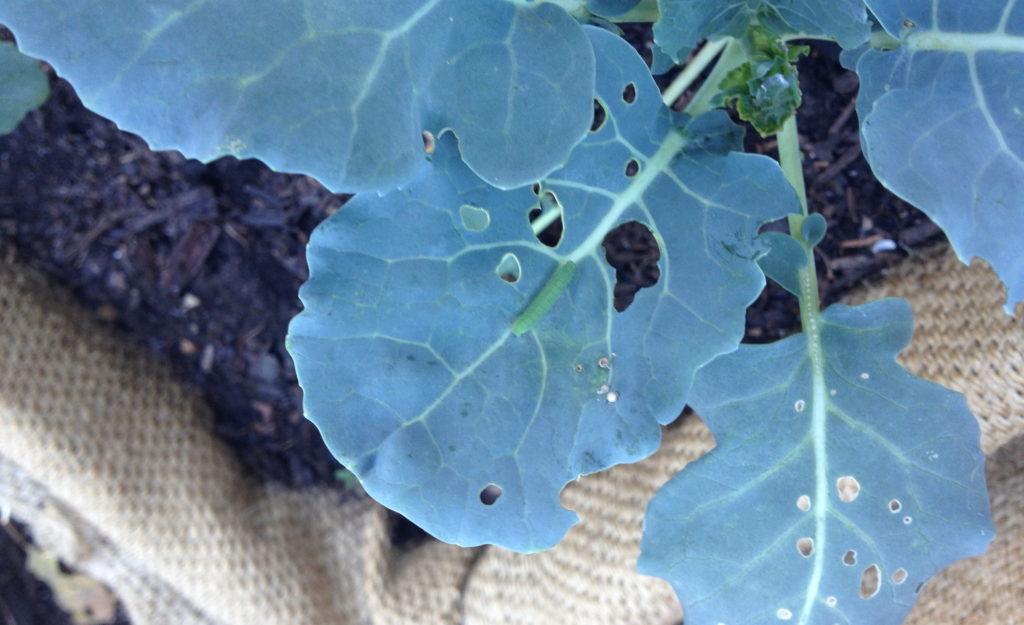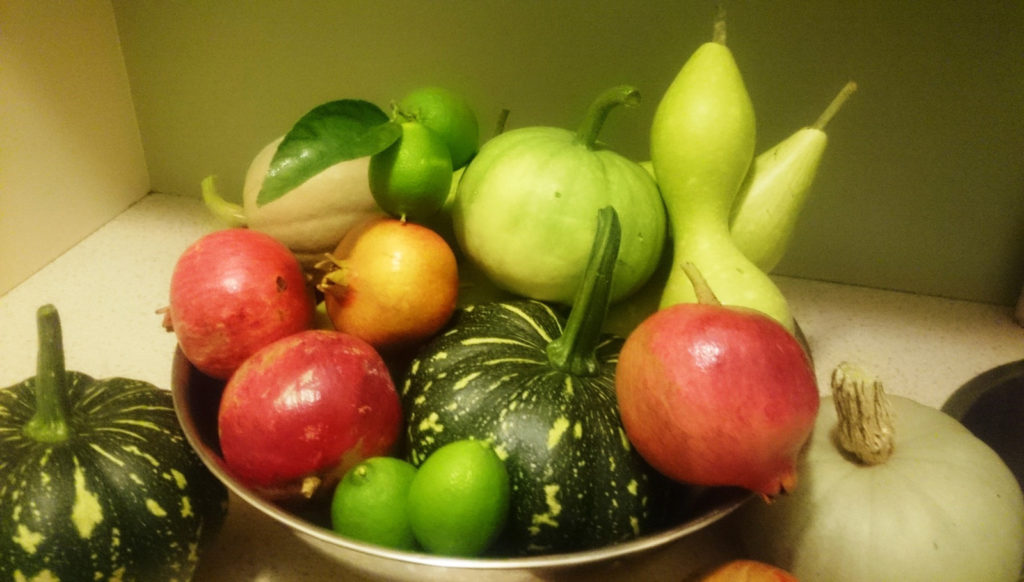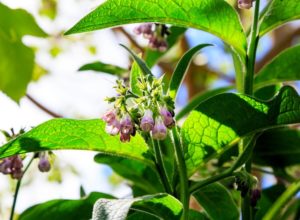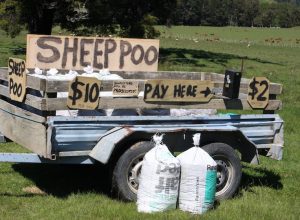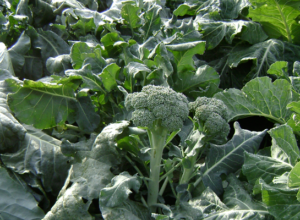May is here, and so of course it follows that our May Garden Guides are here, with tips, tricks and to-do’s for different climates around our great southern land.
Cool Temperate May Garden Guide
by Christina Giudici of FIMBY
WHAT TO PLANT?
All the things we talked about last month are good to go again this month. Garlic, brassicas such as broccoli and cauliflower, broad beans, peas (sugar snaps, snow peas or podding peas, either climbing or bush varieties), silver beet, English spinach, winter lettuces, and spring and salad onions.
It works well to scatter some coriander seed around where you’ve planted peas. The coriander grows well through the cool months without bolting to seed (it will do that quickly in late spring and summer) and doesn’t mind the shade as the peas grow larger.
You can try some shallots too – simply buy some nice looking ones at a farmers market or grocery shop, make sure they are broken up into individual bulbs, and plant them similar to garlic. You should find that they grow well and eventually form little clusters of 4-6 new shallots on the surface, attached at the base and spread out a bit. Make sure you buy local shallots to plant, since imported ones are likely to be irradiated or fumigated for quarantine reasons, and therefore won’t grow.
Now is an excellent time to think about growing a ‘green manure’ crop over winter to feed your soil and the soil organisms. See notes below for more info.
MAINTAINANCE
“Green manure” is grown especially to enrich the soil and it’s teeming ecology of micro-beasts, fungi and bacteria. A green manure crop is grown from seed scattered on the soil and raked in. Simple! Then stand back, watch it grow, and when you’re ready chop it up and lightly dig it in to the surface layers. The soil organisms break down the roots and chopped leaves, creating humus, building soil structure (worms love it), and making available plant nutrients for your vegies. You can even just chop, pull, and drop, to create a mulch layer ready to plant into.
For winter we like to use a mixture of grains (oats and ryecorn) and legumes (peas, lupins, tic beans), which germinate and grow plenty of root and leaf mass even in cold wet weather. The grain roots contribute heaps of exudates to feed and stimulate the soil ecology, and the legumes host bacteria in root nodules that fix nitrogen from the air pockets in the soil, making it eventually available to other plants that will grow there.
PESTS AND DISEASE
Late outbreaks of aphids can strike in the variable late Autumn weather, especially after the warm Autumn we’ve had. Watch out for grey ones on brassicas, especially where broccoli or cabbage heads are forming, and black ones on chives, young garlic or spring onions. A small outbreak can be dealt with by jetting them off with a hose, or dosing with slightly soapy water then massaging them off with gloved hands. More severe outbreaks can be given a targeted spray of pyrethrum – but don’t squirt this around everywhere, just use it as a non-residual knockdown. And don’t spray poisons on bits you’re going to eat soon, eg. broccoli heads that will be picked within a few days.
Any mildewy leaves of late season zucchinis or cucumbers can go in the compost – the fungi and other organisms there will sort out (ie. eat!) the mildew. Remember though its good practice not to compost your tomato vines, so send them to the bin as they come out.
HARVEST AND PRESERVE
Quinces and apples are nearly finished for the season. Both of these pome fruits go well in preserves with their close cousin, the medlar. Medlars are a decorative and unusual looking small fruit, on very attractive trees. They need to ‘blet’ or fully ripen, after picking. Then they can be eaten as is, having a granular texture and sweet date-like taste. But a great traditional use for them is to make jelly. Simply throw them in a pot with a bit of water (you can add a small amount of quince or apple too), cook gently till everthing is soft, then strain through a fine cheesecloth (or double lining of clean chux). Measure out the strained liquid into a saucepan and add about two thirds that volume of sugar. Cook it up until you reached jell point, then bottle in sterile jars. Its fragrant, pretty, and delectable on breakfast toast!
PERMACULTURE PRINCIPLE NO 5: Use and value renewable resources and services
Renewable resources are ones which are replaced naturally (eg sustainably managed forest systems), or not even consumed in process of being used (eg hydro or wind energy). Sadly there are far too few examples of sustainable resource use, especially for energy, at a decent scale in Australia.
At a personal scale, when we have time and interest and motivation, its not difficult to utilise and value renewable resources such as native timber.
We have some acres of forest and cleared land. The wonderful old gent who sold us the land, a forest worker all his life, helped us fell a grand old blue-gum tree this time last year. A single giant. We milled it on site, and now have a big stack of boards, joists, rafters and large slabs racked up and drying. We’ll use them in building our house and other projects there.
Some of the trunk that was knotty and twisted will be cut for firewood. The limb wood that is 10 – 30 cm in diameter we cut for a local mushroom guru to grow shitakes. The smaller limb wood will be cut and stacked, then used to make biochar to add to compost and eventually go on our garden beds. The fine branches and leaves will be chipped and used to build a slowly decomposing compost heap with black polypipe threaded through it. This should generate hot water for an outdoor bath and washing up for at least some months. The sawdust is being used on pathways in perennial planting zones, and we’re doing some experimental processing with blood and bone and urea mixed with sawdust in stacks.
In the garden you also have a chance to take the principle of using and valuing renewable resources to heart, and really think through the source and back-story of everything you use. There are plenty of opportunities to use resources in several ways in a cascading cycle, then finally return them to the soil via compost to feed the soil biota that is the foundation of healthy nutrient dense food. For example:
Prunings from your fruit trees can become ‘pea sticks’ trellis for your climbing plants. Then when they’re getting a bit old for that, criss-cross them to make an aerating base layer for your compost heap. Then eventually chop or break them up and add to the compost for a long lasting addition to the heap.
Hay bales can be used to form the edge of a new garden bed, or pile of autumn leaves, or compost heap. When they’re getting a bit spongy, they can be broken up and used as mulch around fruit trees and berries, or added to compost.
Sawdust can be used in pathways as a pleasant mud free surface. In heavy soils, if you dig out the path a bit first, then fill with sawdust, you’ll get a drain as well. Wet sawdust is eventually colonised by worms, so after a year or two your pathway/drains can be shovelled out as awesome mulch around perennial plants, and new sawdust added.
Mediterranean May Garden Guide
by Nadja Osterstock of Nadja’s Garden
Welcome back, my old friend May, with your drizzling rains and your shorter days! With your soft sun inviting me out to play!
Other old friends are back too, like soursobs and thistles – they do no harm, but to maintain clear paths I like to pull them out before they flower. The soursobs can rot down to sludge in a black plastic bag to later be added to compost, and the thistles are a chook’s favourite breakfast. But try not to dig deeply in a soursob-infested patch as it just makes them multiply! (Says me, always wanting to plant at this time of year). This season I’m experimenting with a stirrup hoe to slice them off at ground level with less effort.
May is a good time for planting broad beans as a green manure. If you want to grow them for picking beans, you can wait until late winter and still be picking a crop around the same time – but for green manure start early and get them dug in before they flower, and prior to planting your spring vegies. Also in the vegie garden, plant broccoli, Brussels sprouts, cabbage, carrots, cauliflower, coriander, corn salad (mache), dill, endive, garlic, kale (multiple varieties for pest resistance), kohlrabi, leeks, lettuce, mizuna, mustard greens, onions, pak choi, parsley, peas, radish, radicchio, rocket, shallots, silverbeet, snowpeas, spring onions, spinach, swede, strawberry plants and turnips.
Fine netting such as VegeNet or old net curtains can be used to keep cabbage moths off the brassicas and leafy greens – or use land cress as a sacrificial companion plant. Peas require some support, especially climbing varieties, and like to be soaked before and during planting and then left to germinate without further watering (this helps to prevent them rotting in the ground). Successive plantings of peas every month keep the supply going until well into spring, and there is nothing better than a handful of home-grown crunchy snowpeas every day!
You know the old carrot planting trick – mix the seed with a cup of dry sand so that you can sprinkle the seed more evenly along the rows and avoid clumps that need early thinning. Keep them moist while they germinate. This is contradictory, because they’re good companions for carrots, but require different germination conditions. So you could put the peas in a little earlier or later than the carrots to avoid keeping them too wet. I had no sooner sown my autumn veg seeds than a well-meaning friend came to visit and her dog hopped up to explore the raised bed. My friend, retrieving the dog, placed her foot right in the middle of my row of pea seeds. I stopped her before she could disturb the rest of the bed by trying to smooth it over. And what do you think happened? The peas in that patch germinated and grew faster than any of the others. Next time I think I’ll get her back to walk over the whole patch…
Flower seeds planted now can bring a profusion of colour to the garden in late winter and through spring. Sow viola, wild pansy (heartsease), calendula, marigolds, stocks, dianthus, foxglove, hollyhock, larkspur, lupin, nasturtium, poppy, sweet pea. In very frost-prone areas you could either wait until the risk of frost has passed, or use light, coarse mulch for frost protection over seed beds (e.g. old dry herb stalks heaped roughly to provide some insulation while allowing seedlings to wriggle through to the light).
Featured Permaculture principle: Use and value renewable resources and services
Seeing the great, snaking buttress roots of a Moreton Bay fig tree near a Sydney beach, I was impressed with the depth of soil and mulch that they could hold back – nature’s original retaining walls! They don’t need concrete or steel or drainage channels, and they are self-replacing. Plus they function as a shade structure and a source of food and shelter for many birds and animals, not to mention offering timeless beauty.
Nadja Osterstock – findNadja’s Garden on facebook, email nadjasgarden@gmail.com,
ph. 0410 636 857, website and blog at www.nadjasgarden.com.au
Visit at Organic Corner Store market.
Free Permaculture talk at Marion Cultural Centre, Wed 4th May, 6.45 for 7pm.

